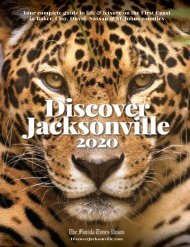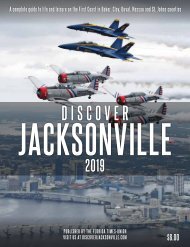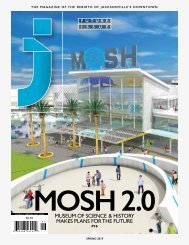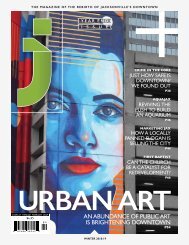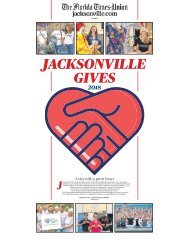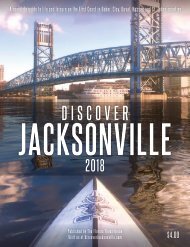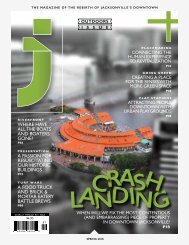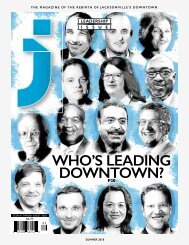J Magazine Winter 2019
Create successful ePaper yourself
Turn your PDF publications into a flip-book with our unique Google optimized e-Paper software.
The street between City Hall and the Oklahoma County Courthouse<br />
wasn’t just six lanes wide. These were 12-foot-wide lanes,<br />
the sort of dimension reserved for highways. And it was a one-way<br />
street, though traffic volume, Speck noted, didn’t seem to support<br />
Hudson being a one-way street or other corridor remaining oneway.<br />
It was on this street that the photographer snapped a shot of<br />
several people, including a woman in a wheelchair and children<br />
darting through traffic trying to cross the six-lane, one-way Hudson<br />
Avenue.<br />
“The jaw dropper for me is the city’s traffic count map,” Speck<br />
said. “If you walk the city, and you look at the streets, you would<br />
think because of the size of the streets that traffic is two to three<br />
times what is actually experienced. There is a shocking disconnect<br />
between the size and speediness of all of your downtown streets<br />
with a few rare exceptions.”<br />
Oklahoma City was not initially designed to end up this way.<br />
Oklahoma City is unlike any other city in America. A gunshot on<br />
April 22, 1889, set up a famous land rush that hours later ended up<br />
with creation of a city of 10,000.<br />
City fathers then designed a street grid and pursued development<br />
based on trolley lines that were built not just throughout the<br />
young community but also to distant towns that decades later are<br />
Oklahoma City suburbs.<br />
The transformation of a city built on public transit to a sprawling<br />
621 miles where cars were prioritized without question over<br />
pedestrians can be traced back to a years-long effort to impose<br />
one-way streets on downtown.<br />
A Stanley Steamer bought by a local banker in 1903 was the<br />
first car to hit city streets and just a dozen years later Henry Ford<br />
was building a Model T assembly plant on the west side of downtown.<br />
Vehicles quickly took over in Oklahoma City, as they did elsewhere.<br />
By 1938, consultants and engineers were already pushing<br />
for conversion of some key downtown streets to one-way traffic.<br />
Business and property owners fought back and won. But the battle<br />
wasn’t over.<br />
The streetcars, succumbing to age and lack of investment, were<br />
yanked off the streets in 1947. The out-of-state operators, who took<br />
over the streetcars from the city fathers who started the operation,<br />
switched to a bus fleet and insisted one-way streets were key to<br />
making bus transit a successful replacement.<br />
Protesters again argued one-way streets would increase confusion<br />
and accidents and damage businesses.<br />
THE OKLAHOMAN<br />
56<br />
J MAGAZINE | WINTER <strong>2019</strong>



